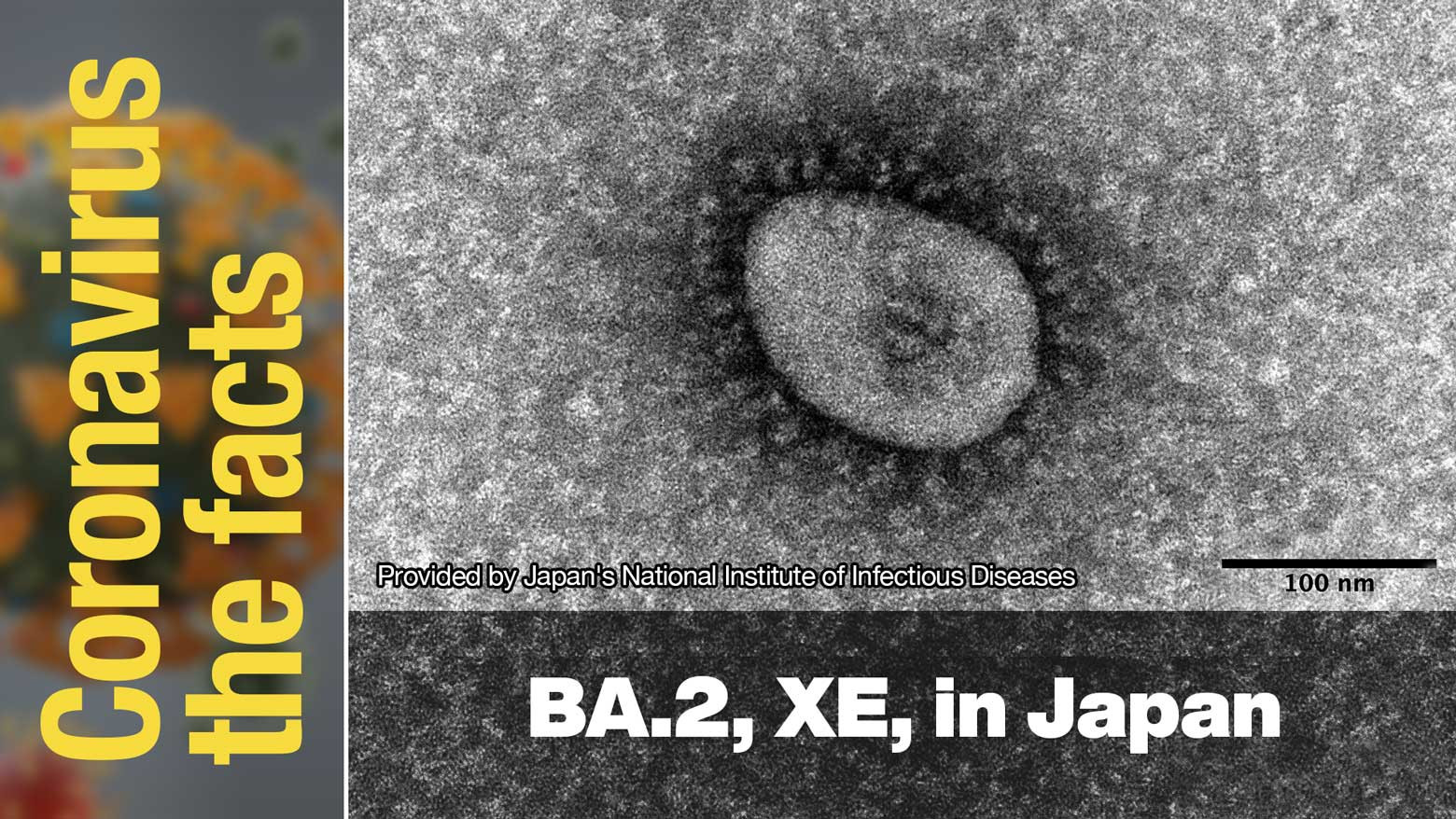This is our series on key coronavirus-related information. Click here to read other installments: #Coronavirus the facts. Find the latest information and answers from experts on everything COVID-19.
Omicron XE in Japan
Japan's health ministry has confirmed the first case of a new hybrid strain of the Omicron variant. Omicron XE is a combination of the BA.1 and BA.2 subvariants and has been detected in the United Kingdom and other countries.
The ministry said a woman in her 30s was found to be infected with the XE strain after arriving at Narita Airport from the United States on March 26.
Health authorities in the UK reported the first XE case on January 19. By April 5, they had recorded 1,179. They estimate the infection rate of the XE strain is 12.6 percent faster than that of the BA.2 subvariant.
BA.2 spreads around the world
BA.2 is still the strain driving infection rates in most parts of the world. Its genetic information, including the spike protein that is its foothold to infect cells, is more mutated than in the BA.1 subvariant.
Health authorities in the UK say BA.2 accounted for more than 90 percent of new infections in the fourth week of March. The US Centers for Disease Control and Prevention estimated the rate in that country was just over 72 percent in roughly the same period.
BA.2 rising in Japan
In Japan, BA.1 is the dominant strain but experts believe BA.2 will soon overtake it. BA.2 was first detected in the country in mid-February. The National Institute of Infectious Diseases (NIID) used data from private testing companies to estimate its spread. They said it accounted for about 30 percent of new cases in mid-March, but are forecasting this will be 93 percent in the first week of May and close to 100 percent in the first week of June.
Stronger Infectivity
The World Health Organization says BA.2 is more infectious than BA.1, which became the main strain around the world. An analysis of data from Denmark shows that BA.2 takes 15 percent less time to spread than BA.1 and found that the effective reproduction number –the average number of people a single carrier will infect—is likely 26 percent higher than that of BA.1.
But the risk of developing serious illness appears to be low. The WHO cites analysis from the UK that shows there is no difference in hospitalization rates between people infected with BA.1 and BA.2. They also say people who have been infected with BA.1 can still be infected with BA.2.
Vaccine efficacy
Research in the UK found that people infected with BA.1 at least one week after receiving a booster shot did not develop symptoms in 71.3 percent of cases. This figure rises slightly to 72.2 percent for BA.2. Vaccine efficacy declines to 45.5 percent for BA.1 and 48.4 percent for BA.2 at least 15 weeks after third shots.
Need to proceed with the third shot rollout
As of April 13, about 85 percent of people in Japan aged 65 or older had received three shots of a vaccine. The rate for the population as a whole was about 46 percent.
A panel of experts advising Japan's health ministry on the pandemic says the number of deaths from COVID-19 dropped significantly in the summer of 2021 when the percentage of people with second shots started to rise.
Tokyo Medical University Hospital Professor Hamada Atsuo, an expert on infectious diseases, says it is important to tighten anti-infection measures, reduce opportunities for person-to-person contact, and encourage more people to get their booster shots. He says the infection rate is growing fastest among people in the 20s, so the key to slowing the outbreak is implementing measures aimed at that age range.
Anti-infection measures
Professor Wada Koji of the International University of Health and Welfare says the emergence of the latest strains of the virus are not unexpected and there is no need to change the policy of basic anti-infection measures.
"BA.2 is now becoming dominant, but even with XE, we need to take the same basic anti-infection measures, and continue with the third vaccine rollout," he says.
This information is accurate as of April 14, 2022.
